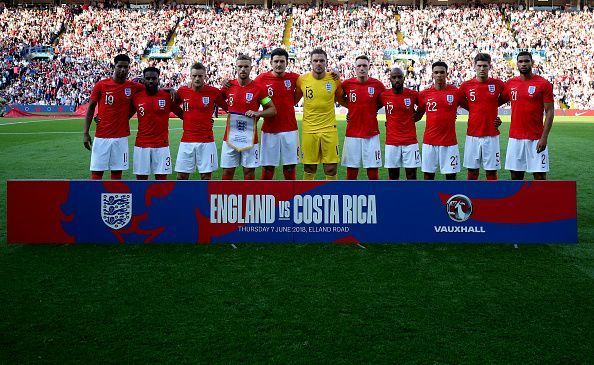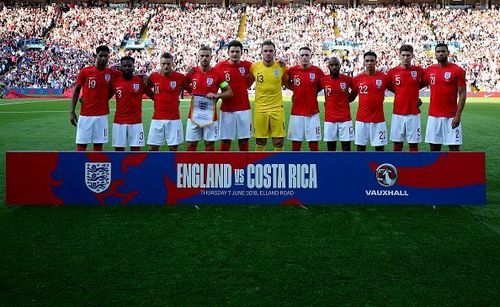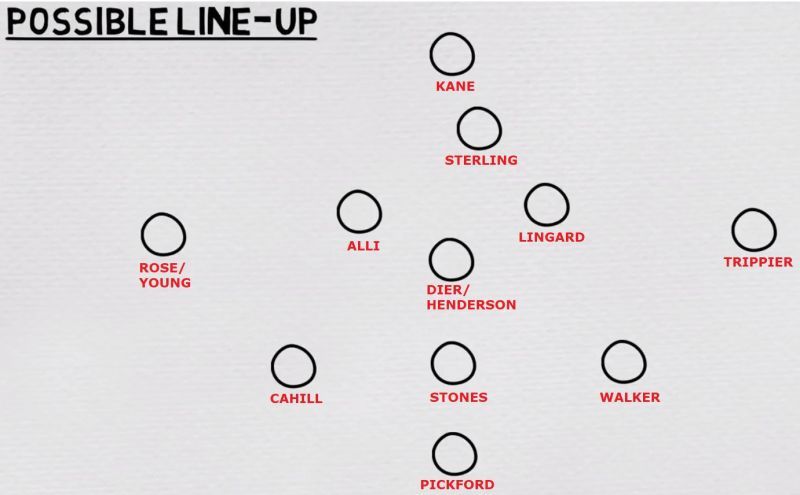
England's 3-5-2 formation explained: A blueprint for success?

England qualified for the 2018 World Cup unbeaten, as they won 8 and drew 2 of their 10 qualifiers. In the process, the team just conceded 3 goals, keeping 8 clean sheets on the way. With a place in Russia already booked, English manager Gareth Southgate switched to a back 3 in the friendlies against Brazil, Germany, Netherlands and Italy.
The traditional 4-2-3-1 system gave way to a more unorthodox 3-5-2 system, which had proved very successful during Chelsea’s title triumph in the 2016/17 season. All in all, the results of this formation switch have been quite encouraging, with England most likely to line up in the 3-5-2 formation against Tunisia on 18th June.
Possible Line up

Pickford’s greater ability with his feet means that he’s likely to get the nod over Stoke’s Jack Butland. The midfield pivot role would be taken up by either of Jordan Henderson or Eric Dier. Henderson’s better passing range might be more suitable to unlock deep defences like those of Tunisia and Panama.
This formation has been facilitated by the ball-playing ability of centre-back John Stones and Kyle Walker’s tactical flexibility which has seen the right back take up the right-sided centre-back role in a 3-man defence. Either one of Garry Cahill/Harry Maguire will take up the left centre-back position.
Spurs' Dele Alli and Manchester United’s Jesse Lingard are expected to take up the other midfield spots, while captain Kane is a certain starter up-front. Despite Rashford’s stunner against Costa Rica, Raheem Sterling’s tremendous season with Manchester City should see him start in a free role behind Kane.
Out wide, Trippier is the favourite for the right wing-back role, while Danny Rose’s dynamic performance against Costa Rica should surely ensure his place ahead of Ashley Young in the left wing-back role.
Benefits of the new formation

The new shape benefits England’s possession in two clear ways:
Firstly, it provides more passing options to the defenders during the first phase of build-up play. Secondly, it is harder for an opponent to press, as the three cover more space horizontally than the previous two-man centre-back pairing. This also allows any one of the three defenders to push out, into the midfield with a knowledge that there will be two defenders covering.
This is where John Stones' ball-playing capabilities come into play, as he occasionally pushes up alongside the midfield pivot, to provide line breaking passes.